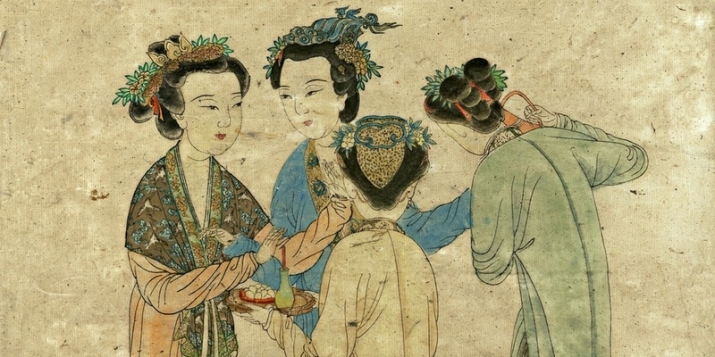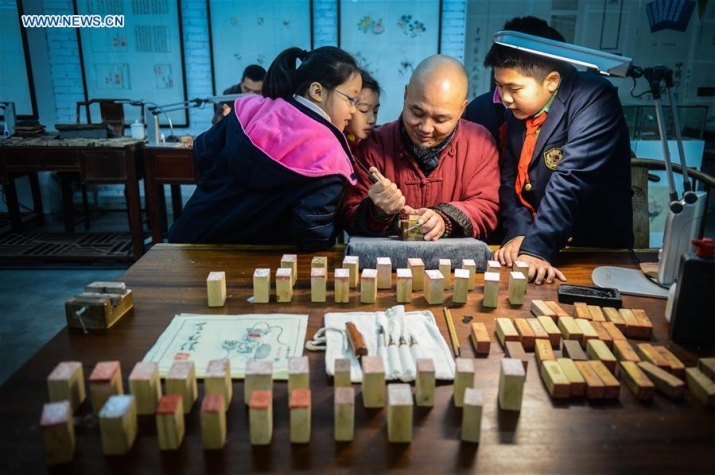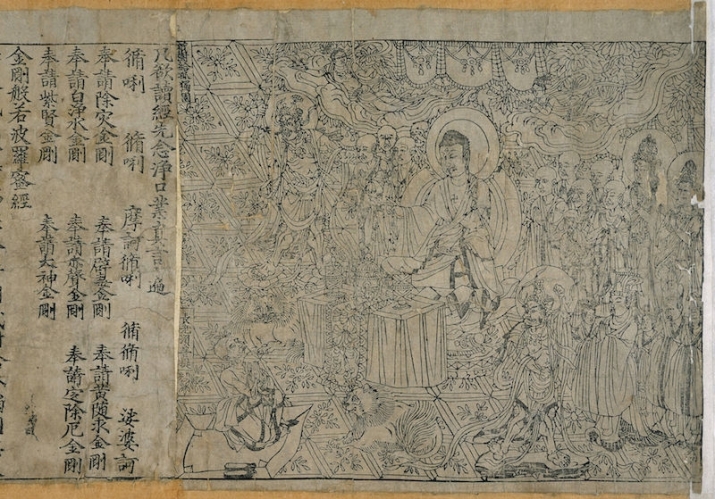NEWS
The Prince’s School of Traditional Arts Exhibits Buddhist Chinese Traditional Woodblock Prints
 Chinese woodblock print by Wei Lizhong. From psta.org.uk
Chinese woodblock print by Wei Lizhong. From psta.org.ukFrom 16–24 February, The Prince’s School of Traditional Arts hosted an exhibition on the ancient Chinese art of woodblock prints. The exhibition was headed by Wei Lizhong, a master of Chinese block printing, who displayed a wide array of prints from his famous Shizhuzhai studio in China’s Zhejiang Province. The items exhibited included historically and artistically renowned pieces, such as the world’s earliest printed book (dated to 868), which is a scroll of the Chinese Diamond Sutra. The scroll was discovered in 1907 by archaeologist Sir Marc Aurel Stein at the Mogao Caves in Dunhuang and is currently in the British Museum’s possession.
Participants enjoyed looking at the woodblock prints and also got some hands-on experience with Wei, who taught the basics of designing and transferring an image to a wooden block and how to safely use tools to cut the block to produce a relief image. “Chinese woodblock printings are found in the British Museum, and through this workshop in The Prince's School of Traditional Arts, I hope to introduce the art to more people in Europe,” said Wei. (CCTV.com)
Since 2003, Wei has been regarded as a specialist in watercolor woodblock printing, which is included on Zhejiang’s list of Intangible Cultural Heritage. After reaching a high point of popularity in the 17th century, the art form almost disappeared until it was revived in the 1930s.
 Wei Lizhong demonstrates woodblock printing techniques to students at his studio in Hangzhou. From xinhuanet.com
Wei Lizhong demonstrates woodblock printing techniques to students at his studio in Hangzhou. From xinhuanet.comWoodblock printings of images and text originated in China and became popular throughout East Asia. It has occupied an important position in the history of handicraft and folk art, as it demands precision in tracing, carving, and printing. Woodblock printing has made tremendous contributions to the spread of literary knowledge, religious insight, and artistic inspiration throughout East Asia. In Japan, the earliest known woodblock printings date from 764–70 when Empress Shōtoku (718–70) commissioned 1 million small wooden pagodas containing printed scrolls.
Woodblock printing is strongly associated with the diffusion of Buddhism throughout East Asia, as Buddhism encouraged the widespread production of religious charms and scriptures. The Tripitaka Koreana, carved onto 81,258 wooden printing blocks in the 13th century, is the world’s longest and oldest intact version of the Chinese Buddhist canon. It is stored in the mountain temple of Haeinsa in South Korea, which has taken pains to ensure that the optimal conditions are in place to preserve the woodblocks. These woodblocks have remained in excellent condition for more than 750 years and drew from previous Northern Song Chinese, Khitan, and Goryeo versions.
 The frontpiece of the Diamond Sutra. From wikipedia.org
The frontpiece of the Diamond Sutra. From wikipedia.orgFounded in 2004 by the Prince of Wales, The Prince’s School of Traditional Arts is a part of The Prince’s Charities group, with the core aim of continuing the living traditions of the world’s sacred and traditional art forms. The school was developed from the Visual Islamic and Traditional Arts Programme established at The Royal College of Art in 1984 by Professor Keith Critchlow. It offers lectures, workshops, and short, practical courses in traditional arts and crafts.
See more
British royal institute opens workshop on ancient Chinese artform (CCTV.com)
Exhibition: Chinese Woodblock Prints by Wei Lizhong (The Prince’s School of Traditional Arts)
The Prince’s School of Traditional Arts (The Prince’s School of Traditional Arts)
Woodblock Printings (Wikipedia)














